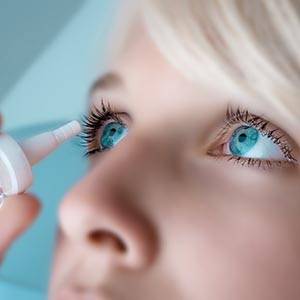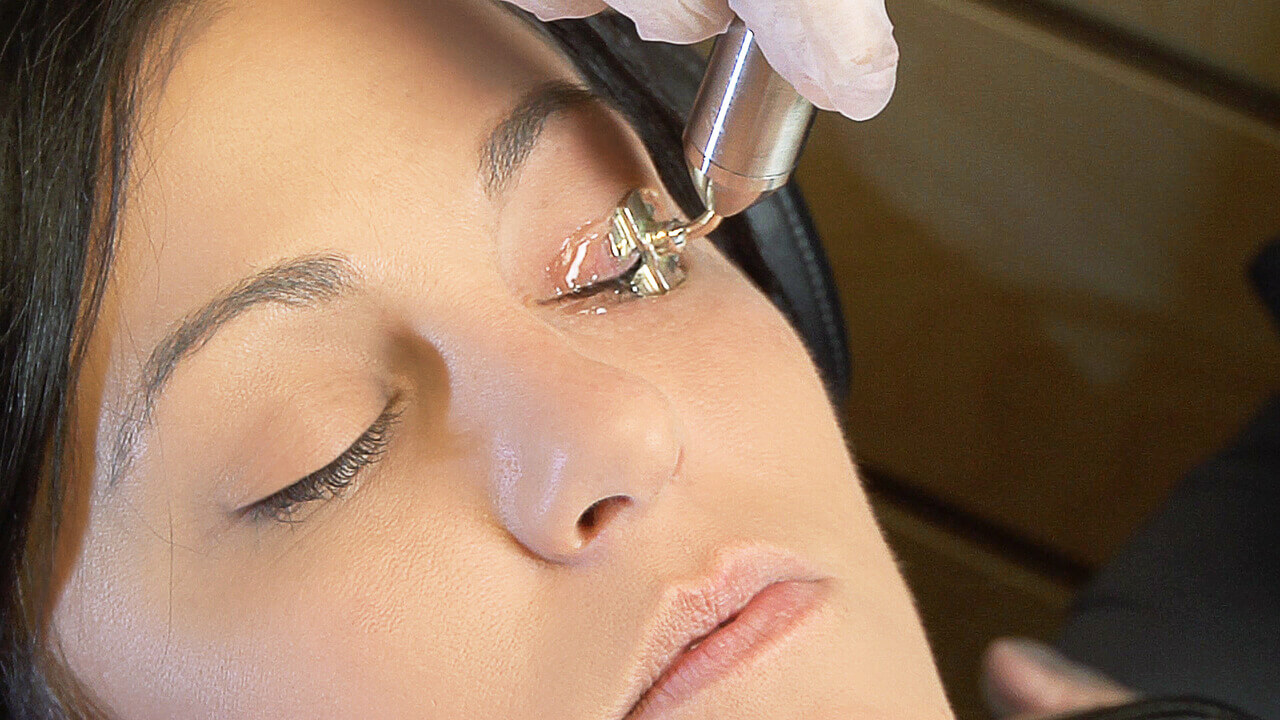Dry Eye Technology in Boise, Idaho
Advanced diagnosis and treatment of dry eye.
What is Dry Eye Syndrome?
Dry Eye Syndrome (DES) is the most common eye condition worldwide. Dry Eye Syndrome is a chronic condition that occurs when the eyes do not produce enough tears, tears evaporate too quickly, or when the tears lack the essential oils to lubricate the eye’s surface and keep the eyes healthy.
While dry eyes typically occur as we age, there are many other factors that cause Dry Eye Syndrome (DES) at any age. Symptoms of Dry Eye range from mild to severe, and can be present occasionally or continuously. Dry Eye can not only affect your clarity of vision and eye health, but also your quality of life.
At Artisan Optics, our dry eye specialist, uses thermal imaging and specialized diagnostic tests to accurately diagnose the cause of your dry eye and prescribe effective treatment.


What Causes Dry Eye?
Dry Eye causes and symptoms are different for everyone. The most common causes of Dry Eye Syndrome (DES) can include:
- Meibomian Gland Dysfunction
- Tear insufficiency
- Allergies or environmental conditions (wind, smoke, dry air)
- Hormonal changes (birth control, pregnancy, and menopause)
- Systemic disorders including auto-immune diseases, endocrine disorders, diabetes, and rheumatoid arthritis
- Aging
- Some medications such as antihistamines, acne medications, hormonal medications, and depression / anxiety medications
Common Symptoms of Dry Eye
Patients with DES experience a number of symptoms that can disrupt their daily activities or cause chronic pain.
The most common signs of DES include the following:
- Blurriness
- Burning
- Dryness
- Feeling as if something is in your eye
- Irritation
- Itchy eyes
- Pain
- Red eyes
- Stinging
- Watery eyes
Those who suffer from DES often try to alleviate the pain by blinking either less or more often, rubbing their eyes, or by using over-the-counter artificial tears.
Why is blinking important? Blinking is healthy because it naturally moisturizes the eyes and gets rid of tiny particles that may enter the eye. Less blinking can increase dryness, itching, or redness, making DES symptoms even more acute.
Rubbing your eyes, especially when they’re already irritated, can intensify your symptoms. This is because the added pressure can make the pain worse. If your hands aren’t 100% clean, you can unintentionally spread germs or bacteria into your eyes when you rub them. Rubbing the eyes can also cause tiny blood vessels to break, increasing the redness of your eyes.
Artificial tears provide some temporary relief by lubricating the eyes with a medicated solution. These can be quite effective at alleviating soreness and itchiness, however, excessive use isn’t recommended. Many brands include preservatives, which aren’t good for your health in the long-term. Other preservative-free brands can, over time, fail to relieve the basic Dry Eye symptoms. Patients may find that having to continuously purchase artificial tears can become costly, and consistently using them throughout the day disrupts their daily activities.
Dry Eye Treatments Testimonials
Dry Eye Treatments
Most eye doctors recommend over-the-counter eye drops or microwaveable eye pads, temporarily treating the symptoms but never addressing the underlying cause. At Artisan Optics we take a different approach. Our doctor tests for and treat the root cause of dry eye.
Because there are different individual factors that contribute to Dry Eye Syndrome, each treatment plan is customized to you. Treatment can consist of at home care, in-office treatment, or a combination of both.
At home care can include prescribed temperature-controlled heat masks and preservative-free artificial tears, or Restasis or Xiidra – which are topical emulsions to treat the inflammatory changes that accompany dry eyes. For more severe cases, Autologous Serum Tears are prescribed. The serum is compounded by using your own blood and removing the red blood cells and clotting factors, and then diluted using a sterile, preservative-free solution.
In-office treatment can include punctal plugs or probing and irrigation of the nasolacrimal ducts. Punctal plugs are used to reduce the flow of tears from the surface of the eye. The insertion of the punctal plugs is quick, painless, and reversible. Probing and irrigation is performed when there is a blockage in the nasolacrimal duct.
For dry eye caused by Meibomian Gland Dysfunction, we offer in-office FDA approved MiBo Thermoflo imaging and treatment.

Dry Eye Technology
Advancements in medical technology and scientific breakthroughs have made treatment for Dry Eye more effective with longer-lasting benefits. At Artisan Optics we offer in-office FDA approved MiBo Thermoflo treatment, bringing real relief to those who suffer from dry eye.
Research shows MiBo Thermoflo treatment is highly effective in treating Meibomian Gland Dysfunction (MGD), which is a blockage in the meibomian glands that causes Evaporative Dry Eye. 86% of all dry eye cases are due to Evaporative Dry Eye.
MiBo Thermoflo is a medical device that offers an alternative therapy for dry eye and blepharitis. In just 12 minutes per eye, the device gently massages the margins of the eyelids where the meibomian glands are located, using controlled heat to liquefy the secretions that block the glands. Once the blockages are removed, the complex oils can once again flow to the surface of the eye, restoring a more balanced tear film, which prevents tears from evaporating too quickly.
MiBo Thermoflo treatment has many benefits, including:
- Nothing touches the eyeball
- Pain-free treatment
- No downtime
- No associated risks or side effects
- Relieves eye strain
- Instant relief
- Has a 98% patient satisfaction rate
To learn more about MiBo Thermoflo treatment for blepharitis and dry eye, or to schedule your dry eye evaluation – please give us a call today. Real relief from dry eye is a phone call away.









